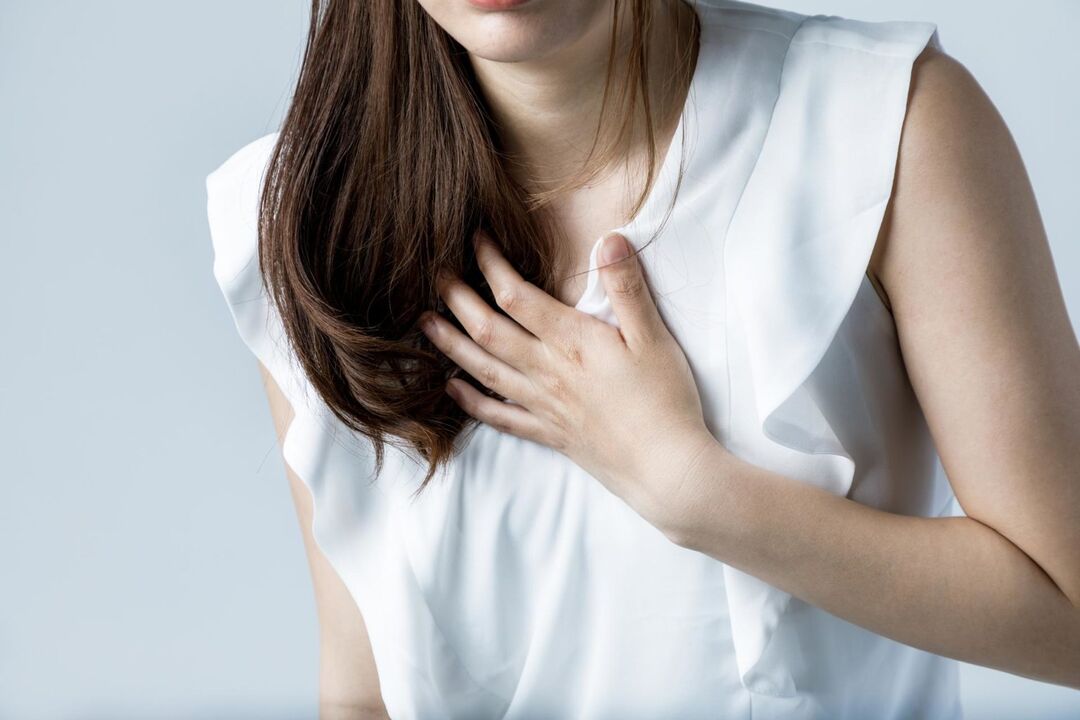Thoracic osteochondrosis is an unpleasant disease that has a long progression and is often invisible. The disease arises as a result of disturbances of normal function and degenerative destruction of part of the vertebrae. Unlike the cervical and lumbar regions, the thoracic region is less likely to develop osteochondrosis due to its low mobility.

Symptoms of thoracic osteochondrosis 1 degree
First -degree osteochondrosis does not show obvious characteristic symptoms, so one decides to seek help from a doctor. Often, the emerging disease is confused with other pathologies in the body: arrhythmias, pneumonia, gastritis. Due to inaction, the disease continues to progress, taking the clinical picture more seriously.
The almost asymptomatic course of osteochondrosis at stage 1 is explained by the peculiarities of the spinal structure. Nevertheless, there are some of the best symptoms to look out for when they appear:
- There is pain in the chest. May be confused with intercostal neuralgia;
- Unpleasant setbacks in the shoulders;
- Tingling in the heart, kidneys, or stomach;
- Absence of obvious pain symptoms in the spine.
In stage 1, only compaction and a decrease in the elasticity of the cartilaginous intervertebral tissue occurs. The spine remains relatively mobile. Due to the fact that the disease manifests itself mainly in other parts of the body, without showing pathology in the immediate place, making a diagnosis is difficult.
Symptoms of stage 2 thoracic osteochondrosis
The transition of the disease to stage 2 means a decrease in the height of the intervertebral disc. As a result, the spine becomes less stable, and the vertebrae acquire unhealthy mobility. At this stage, the patient feels severe pain, indicating a problem with the spine.
Osteochondrosis of the 2nd degree thoracic region, in contrast to stage 1 disease, is accompanied by pathological changes that make it difficult to return to a healthy state. The morphological symptoms of the disease are manifested in the form of capsule rupture and protrusion formation. A common occurrence at this stage is the occurrence of cracks in the fibrous ring. Thus, the painful sensation is clearly felt directly in the affected area of the spine, for which the diagnosis is greatly simplified. Clinically, osteochondrosis like this looks like this:
- Recurrent pain in the chest area;
- Pinch in the chest.
- When you are in one position for a long time, discomfort appears;
- When you try to put your hands behind your head, there is a sharp pain;
- Decreased blood pressure;
- The onset of scoliosis.
The incidence of stage 2 osteochondrosis is due to the absence or poor treatment of stage 1 disease.
Symptoms of thoracic osteochondrosis 3 degrees
If the treatment of stage 2 osteochondrosis is carried out poorly, or out of time, then the disease will go into the next more dangerous stage 3.
Morphologically, in the spine of a sick person, partial or complete destruction of the fibrous ring occurs. The fixation and shock absorption capacity of the vertebrae decreases dramatically, leading to the formation of intervertebral protrusions and hernias, followed by pinched nerves. The symptoms are permanent and severe, causing complete discomfort:
- The appearance of a sharp pain at the time of coughing, taking a deep breath or just laughing;
- Persistent aching pain in the affected back area;
- Intercostal neuralgia;
- Pain in the heart;
- Possible numbness and cramps of the limbs;
- Restriction of discomfort in hand mobility;
- Signs of biliary dyskinesia and pancreatitis;
- Painful tingling in the solar plexus.
All of the above symptoms are largely a permanent obsessive character. After each dynamic or static load, there is a sharp increase in pain that persists even in the supine position. If this stage is also initiated, changes in the bone marrow occur and disability appears.
Treatment of thoracic osteochondrosis 2, 3 degrees
There is only a small fraction of the likelihood that the disease will go in the opposite direction. Basically, in the treatment of osteochondrosis, having stage 2 or 3, either slows or stops the degenerative progression of the disease from occurring.
All proposed methods and methods of treatment are divided into drug and non -drug therapy.
- Medicine. The main directions of medications prescribed by a doctor are pain relief, stimulation of tissue microcirculation and reduction of inflammation. Medications relieve uncomfortable symptoms, helping to improve patient well-being. Depending on the manifestations of the disease, a person suffering from osteochondrosis can be prescribed drug therapy that can:
- Relieves persistent pain. Non-steroidal anti-inflammatory drugs are prescribed;
- Store fluid in the intervertebral disc cavity. It is recommended to use papain;
- Relieves cramps and pinching. Muscle relaxation and antispasmodics help;
- Restore a healthier condition of cartilage tissue. Acceptance of chondroprotectors is indicated.
- Not drugs. This type of therapy has positive effects both on its own and in combination with traditional treatments. In the world there are a huge number of ways to improve the condition of a person with osteochondrosis. The main ones are:
- Withdrawal of funds in accordance with traditional medical recommendations. Application is found in infusions and decoctions of celery root or sunflower root, various ointments.
- Acupuncture;
- Assistance in manual and post -isometric therapy;
- Physiotherapy;
- Plastic massage;
- Correction of patient lifestyle and nutrition;
- Traction and fixation of the vertebrae.
In the case of grade 3 osteochondrosis, in addition to other methods, it is often necessary to use surgical intervention. Also, the medications listed can be combined with taking hormone medications such as prednisone.
Osteochondrosis is a serious disease that needs attention. To prevent its development, it is recommended to carry out various preventive procedures, add physical education to life and follow the rules of a healthy diet.



















